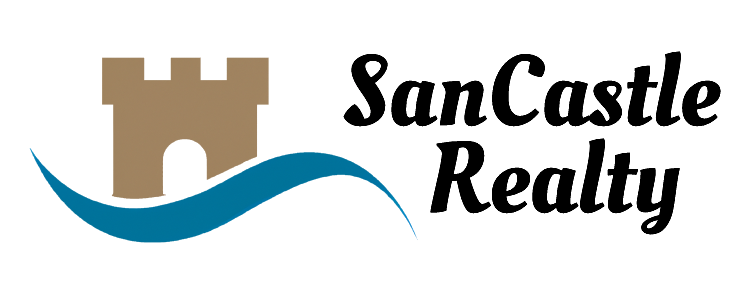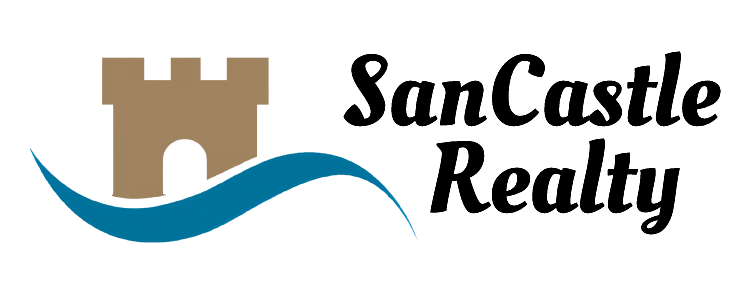sancastle realty's Blog
Our Blog Articles

8 Proven Strategies to Save for a Down Payment Faster Than You Thought Possible
Introduction
Buying a home is a major life goal—and one of the biggest financial undertakings you’ll ever make. But for many aspiring homeowners, especially first-time buyers, the biggest hurdle isn’t qualifying for a mortgage—it’s saving for the down payment. The good news? With the right strategies, saving for a down payment is not only achievable but can happen much faster than you might expect.
In this blog post, we'll walk you through seven powerful strategies to build your down payment fund efficiently, tackle common savings challenges, and move you closer to homeownership in 2025. Whether you're aiming for a 3.5% FHA minimum or a 20% conventional down payment, these tips are tailored to boost your financial momentum.
Why a Down Payment Matters More Than Ever
Down payments impact your mortgage rates, approval odds, and long-term housing costs. While the traditional 20% down payment helps you avoid private mortgage insurance (PMI), the median down payment among U.S. buyers is closer to 13% as of 2024. However, with rising home prices—the median U.S. home price now at $460,000—even 10% equals a hefty $46,000.
Here’s where smart savings strategies come in. Let’s explore how you can fast-track your journey to homeownership.
The 8 Best Strategies to Save for a Down Payment
1. Set a Specific Target and Timeline
One of the most effective ways to stay on track is to define your savings goal. Determine:
The type of property you want
The estimated cost
The down payment percentage required
Let’s say your target is a $400,000 home. A 10% down payment means you need to save $40,000. If you plan to buy in 2 years, you’d need to save about $1,667/month—or adjust your timeline to fit your income.
2. Automate Your Savings
Automation removes the temptation to spend. Set up automatic transfers from your checking to a high-yield savings account right after payday. This "pay yourself first" model builds consistency and eliminates manual decisions.
Why it works: Studies show people save up to 25% more when they automate contributions.
3. Open a Dedicated High-Yield Savings Account
Keeping your down payment fund separate from everyday expenses reduces accidental spending and grows your money faster. Look for an online bank offering at least 4% APY or more as of 2025.
Also, consider using a money market account or short-term CD ladders to increase returns while maintaining access to your funds.
4. Slash Non-Essential Spending (Without Feeling Deprived)
Start with a monthly expense audit. Cancel unused subscriptions, limit dining out, or switch to lower-cost entertainment options.
Example savings:
Cutting a $5 daily coffee = $150/month
Skipping 2 takeouts/week = $200/month
Combined, that’s $350/month or $4,200/year added to your down payment.
5. Boost Your Income with a Side Hustle
From freelancing and tutoring to driving for ride-shares or renting out a spare room, side gigs can significantly increase your down payment fund.
Stat to know: The average side hustle brings in $810/month according to a 2024 LendingTree study.
Make your side hustle income your “down payment fund” and watch it grow without touching your primary salary.
6. Use Windfalls and Tax Refunds Wisely
Put any unexpected money directly into your savings. This includes:
Work bonuses
Inheritance or gifts
Tax refunds (average refund in 2024: $3,125)
Stimulus payments or state rebates
7. Explore Down Payment Assistance Programs (DPAs)
You don’t always have to go it alone. Many states, local governments, and nonprofits offer first-time buyer assistance, sometimes up to $15,000 or more in grants or forgivable loans.
Check out HUD’s list of local programs to see what you qualify for in your area.
8. Explore Low-Down-Payment Loan Options Like FHA and VA Loans
If you're worried that a 10-20% down payment is your only ticket into homeownership, here's some great news: you have options.
FHA Loans: Just 3.5% Down
The Federal Housing Administration (FHA) offers loans that allow buyers to put down as little as 3.5%, making it one of the most popular options for first-time buyers with moderate credit scores. For example, on a $400,000 home, that’s just $14,000—a far more attainable goal.
Minimum credit score: 580 for 3.5% down (or 500 with 10% down)
Flexible qualifying criteria
Available to first-time and repeat buyers
VA Loans: 100% Financing for Veterans
If you're an active-duty service member, veteran, or eligible surviving spouse, you may qualify for a VA loan, which offers 100% financing—no down payment required.
Backed by the Department of Veterans Affairs
No private mortgage insurance (PMI) required
Competitive interest rates
But don’t forget: Even if you qualify for an FHA or VA loan, you’ll still need to cover closing costs, which can range from 2% to 5% of the home’s purchase price.
Pro Tip: Negotiate Closing Costs with Seller Credits
In today’s real estate market, it’s possible to negotiate seller concessions or seller credits to help cover some or all of your closing costs. These are especially common in buyer-friendly markets or when sellers are motivated.
For example, on a $400,000 home with $10,000 in closing costs, a seller might agree to credit that amount in the sale contract—leaving you with minimal out-of-pocket expenses at closing.
FAQs: What You Need to Know About Saving for a Down Payment
How much should I save for a down payment?
Aim for at least 10–20% to avoid PMI and reduce monthly payments. However, FHA and VA loans may allow lower down payments starting at 3.5% or even 0%.
Can I use 401(k) funds for a down payment?
Yes, some plans allow penalty-free withdrawals for first-time homebuyers, but always consult your financial advisor first due to tax implications and retirement impact.
Should I prioritize paying off debt or saving for a home?
It's a balance. High-interest debt should be reduced, but you can still save concurrently—especially in high-yield savings accounts.
Conclusion
Saving for a down payment may seem overwhelming, especially with home prices and living costs on the rise. But with intentional planning, automation, smart spending, and resourceful thinking, you can reach your goal faster than expected. Start today, and watch your dream of homeownership become a reality.
Ready to Take the First Step Toward Homeownership?
Whether you're just starting to save or exploring financing options like FHA or VA loans, the journey to homeownership begins with expert guidance. For personalized advice, loan strategies, or help finding the perfect home, contact John Sansaricq at SancastleRealty.com today.

